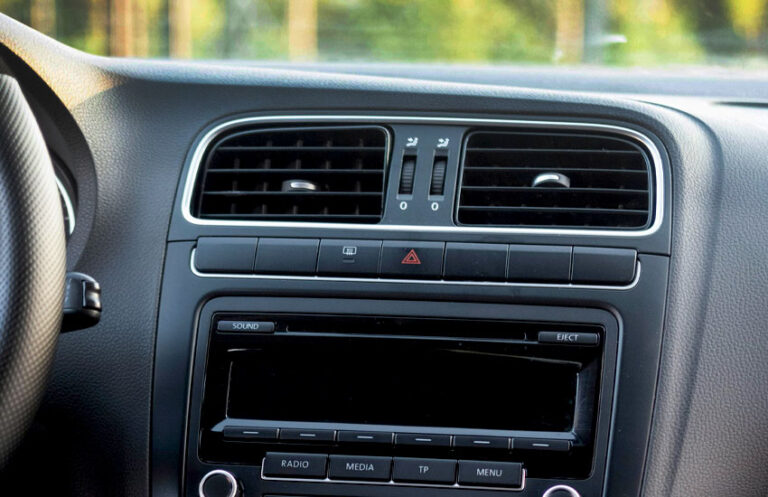As an Amazon Associate, I earn from qualifying purchases at no extra cost to you.
Adaptive Cruise Control Problem: Fix Common Problems
You are driving on the highway, using adaptive cruise control, and suddenly it stops working. You feel confused and even scared. I have been there too. The good news is, there is a solution. In this article, you will learn how to fix adaptive cruise control problem in simple and easy steps. Whether it is a dirty sensor, software issue, or something else, I will help you fix it. This guide will give you real help so you can drive safely again.
Check for Dirt or Blockage on Sensors
Adaptive cruise control uses sensors, mostly radar or cameras, to detect the cars in front of you. These sensors are usually placed in the front bumper or near the windshield.
One of the most common reasons why adaptive cruise control stops working is because the sensors are dirty or blocked. This can happen when dirt, snow, mud, leaves, or even bugs cover the sensor.
If the sensor is dirty, it cannot see the road or the other vehicles clearly. That means the system will stop working to avoid making a mistake. This is a safety feature, but it can feel like a problem when it happens.
So the first thing you need to do is check the front of your car, especially where the sensors are located. Take a clean soft cloth or microfiber towel and gently wipe the area. Use water or mild car soap if needed, but make sure the cloth is not rough. Never use anything sharp or hard that could scratch the sensor.
Even if you think the car looks clean, there could be a thin layer of dust or road salt that blocks the signal. So always clean the sensor area carefully.
In the winter or rainy season, you should clean the sensors more often. Also, avoid parking your car near trees or bushes where leaves and small branches can fall on the bumper or front grill.
Sometimes, the sensors are behind a plastic cover or logo on your car. You may not be able to see the actual sensor, but still, clean the outside area well. If your car has a camera near the windshield or rear-view mirror, clean that area too.
After cleaning, start your car and see if the system works again. In many cases, just removing the dirt is enough to fix the problem.
If you drive a lot on highways or country roads, bugs can get stuck on your car. Make a habit of cleaning the sensor area once a week.
- Always check for dirt or leaves on front bumper
- Clean sensors with soft cloth and water
- Avoid rough cloths or hard brushes
- Clean camera area near windshield too
- Test system again after cleaning
Restart the Car and Reset the System
Sometimes, adaptive cruise control has a small glitch or software problem. Just like when your phone or computer acts strange, turning it off and on again can fix it. This may sound too simple, but it really works for many people.
If your adaptive cruise control suddenly stops working while driving, pull over safely and turn off the car. Wait for a minute or two. Then, start the car again. This restart helps reset the system, and the control unit may clear the error.
Some cars also have a way to reset just the adaptive cruise control system. You can find this in the car’s menu, usually under driver assistance or safety settings. Check your car manual for the exact steps. If you’re not sure, you can also look on your car’s dashboard for messages like “ACC not available” or “ACC temporarily disabled.”
Sometimes the car needs a soft reset, like just turning off and on. But if the system still does not work, you may need a full reset. You can do this by removing the car battery connection for a few minutes. This will reset all systems in the car, not just cruise control.
But be careful, because removing the battery can erase your clock, radio settings, and other things. It's better to try a simple restart first.
Also, make sure that your foot is off the brake when turning on the system. In some cars, pressing the brake can stop adaptive cruise control from starting.
After the restart, take the car for a short drive and try using the adaptive cruise control. If it works again, then it was just a small system glitch.
- Turn off car and wait before restarting
- Try restarting the system from menu if available
- Check car manual for system reset instructions
- Try full car reset by disconnecting battery (optional)
- Take a short drive to test if system is back
Inspect the Brake System and Brake Lights
Adaptive cruise control is connected with your car's brake system. If something is wrong with your brakes, the system may stop working. One common problem is a bad brake light switch. This small switch is found near your brake pedal. It tells the car when you press the brakes.
If the brake light switch is broken or not working right, the adaptive cruise control may think you are always pressing the brake. In that case, it will turn itself off.
To check this, press the brake pedal and look if the brake lights turn on. You can ask a friend or family member to check the lights while you press the brake. If the lights don't work, the switch may be faulty.
Sometimes the brake pedal itself may have a problem. If it does not return fully to its position after pressing, the system may still think you are braking. This can also cause cruise control to stop.
Other things like low brake fluid or worn-out brake pads can also affect the cruise system. So, get your brakes checked if you feel anything odd while pressing the pedal.
If you recently had any brake work done, like pad replacement or brake light changes, the mechanic might have moved or disconnected something by mistake. It’s good to go back and check.
- Check brake lights when you press pedal
- Faulty brake light switch can stop cruise control
- Brake pedal should return fully after pressing
- Get brakes inspected if anything feels wrong
- Look out for low brake fluid warnings
Scan for Error Codes with an OBD2 Tool
Your car has a computer system that checks everything all the time. If there is a problem with the adaptive cruise control, the system might save an error code. You can read these codes using a small tool called an OBD2 scanner. This tool plugs into your car under the dashboard.
You can buy an OBD2 scanner online or at an auto parts store. Some are very cheap and easy to use with your phone using Bluetooth. Others have their own screen.
Once plugged in, turn the car on and read the codes. If the scanner shows any codes related to sensors, brakes, or radar, write them down. These codes can tell you exactly what is wrong.
Some common error codes for adaptive cruise control start with the letters C or U. They might say something like “Radar sensor fault” or “Brake switch circuit error.”
You can search the code online or in your car manual. That will help you understand what part needs fixing or checking. If you don't understand the code, show it to a mechanic.
Even if the cruise control is working again, checking for error codes is a smart step. Some problems come and go, but the code stays in the system for a while.
- Use OBD2 scanner to find hidden problems
- Plug scanner under dashboard and read codes
- Look for codes about radar, brakes, or cameras
- Write down the code numbers for research
- Show code to mechanic for expert help
Update Car Software or Check for Recalls
Sometimes, car makers find bugs in their software and send updates to fix them. Just like phone or app updates, these updates improve safety and fix known issues. If your adaptive cruise control stopped working, it could be due to old software.
Call your car dealership and ask if there is any software update for your car's safety or cruise control system. They can check using your car's VIN number. If there is an update, they will usually install it for free.
Also, check if there is a recall for your car model. Sometimes the problem is not your fault at all. The car company may have found a defect in the system and they will fix it for free. You can find this on your country's vehicle safety website or by calling your dealer.
Some newer cars also allow updates over Wi-Fi. Check your car's menu or settings for any download option.
If your car was in an accident or had windshield or bumper repair recently, the adaptive cruise control might need recalibration. Even a small bumper push can move the radar sensor out of line.
Only a dealer or trained technician can properly realign the sensor. If it's out of place, the system won't work right or will turn off randomly.
- Call dealer to ask about software updates
- Ask about recalls using your VIN number
- Some updates may install through car Wi-Fi
- Recent repair work can affect radar alignment
- Visit dealer for sensor calibration if needed
Visit a Trusted Mechanic or Dealer
If you tried everything and the adaptive cruise control still does not work, it's time to take your car to a professional. Go to a trusted mechanic or your car dealer. They have the right tools and training to find and fix the problem.
Make sure to explain exactly what happened. Tell them when the system stopped working and if any messages showed on the dashboard. Also tell them what steps you already tried, like cleaning sensors or restarting the car.
They may run a deep scan with their tools and check every part connected to the cruise system. This includes the radar unit, camera, brake parts, wiring, and software.
If your car is still under warranty, the repair might be free. Always ask before paying anything.
Don't ignore the problem for too long. If you wait, it could get worse and cost more later. Also, driving without a working adaptive cruise control system can make long trips more tiring and less safe.
- Visit trusted mechanic if nothing else works
- Share full history of the problem
- Ask about warranty or free repair options
- Let them scan and inspect the system fully
- Don't delay repairs if problem stays
Quick Guide
| Task | What to Do |
|---|---|
| Check sensors | Clean dirt, bugs, or snow from radar/camera areas |
| Restart car/system | Turn off and on or try full reset with battery (optional) |
| Inspect brakes | Check brake lights, fluid, and brake pedal movement |
| Use OBD2 scanner | Plug in tool and check for saved error codes |
| Update software | Call dealer or check for online updates and recalls |
| Visit mechanic | Go for deep inspection if all else fails |
Final Thoughts
Fixing an adaptive cruise control problem may seem hard, but many times, the solution is simple. Cleaning sensors, checking brakes, restarting the system, or scanning for errors can bring it back. Always try these steps first. If the problem stays, visiting a trusted mechanic is the best way. Keeping your system working helps you drive safe and easy. Do not ignore the signs. With care and the right steps, you can enjoy stress-free driving again.
Frequently Asked Questions (FAQs)
Is it safe to drive if my adaptive cruise control stops working?
Yes, it is safe to drive, but you must be extra careful. Without adaptive cruise control, you must control the car speed and distance yourself. This can be tiring on long trips. Also, it may mean another safety feature is not working. You should fix it soon to make sure all driving systems are in good shape.
Can dirt really stop adaptive cruise control from working?
Yes, dirt is one of the top reasons it stops working. The sensors cannot see clearly when covered in mud, bugs, or snow. Even light dust can block the signal. That's why cleaning them with a soft cloth can often fix the issue quickly. Always check and clean sensors first when there's a problem.
Do I need a mechanic to fix adaptive cruise control?
Not always. You can try cleaning, restarting, or checking brake lights yourself. But if the problem stays or error codes show up, then it's better to see a mechanic. They can check the radar alignment, sensor wiring, and update software properly with special tools.
Is it possible the system just needs a reset?
Yes, many problems are small and fixed by restarting the car or system. Turning the car off and back on, or removing the battery for a few minutes, can reset the system. Just make sure to follow steps safely, and try a short drive after reset to see if it works.
Can I use a phone to scan for error codes?
Yes, many small OBD2 tools use Bluetooth and work with phone apps. You can connect the tool under your dashboard and read the codes on your phone. Some apps even explain what the codes mean, which helps you fix the issue faster without guessing.
Do I need to update my car's software?
Yes, sometimes the system fails due to old software. Car makers send updates to fix known issues or improve systems. You can ask the dealer or check online using your car's VIN number. Updating the software can fix many small issues and improve safety features.
Is it normal for adaptive cruise control to stop in bad weather?
Yes, heavy rain, snow, or fog can block the radar or camera sensors. The system may turn off to stay safe. This is normal. Once the weather gets better and sensors are clean, it should work again. Always clean the sensors after driving in bad weather.
Do I need to recalibrate the system after an accident?
Yes, even a small bumper hit can move the radar sensor. This can make the system stop working or give false alerts. Recalibration must be done by a trained expert or dealership. They use special tools to make sure the sensors are aligned and working correctly.






